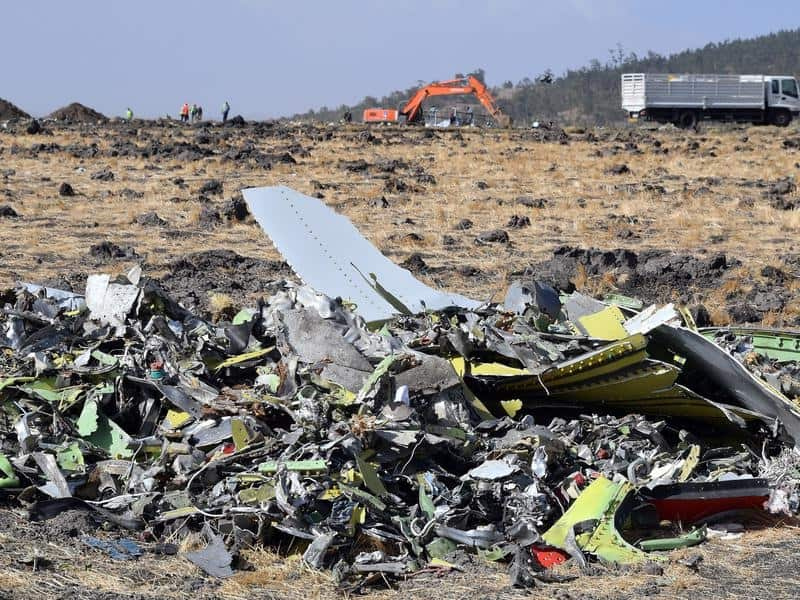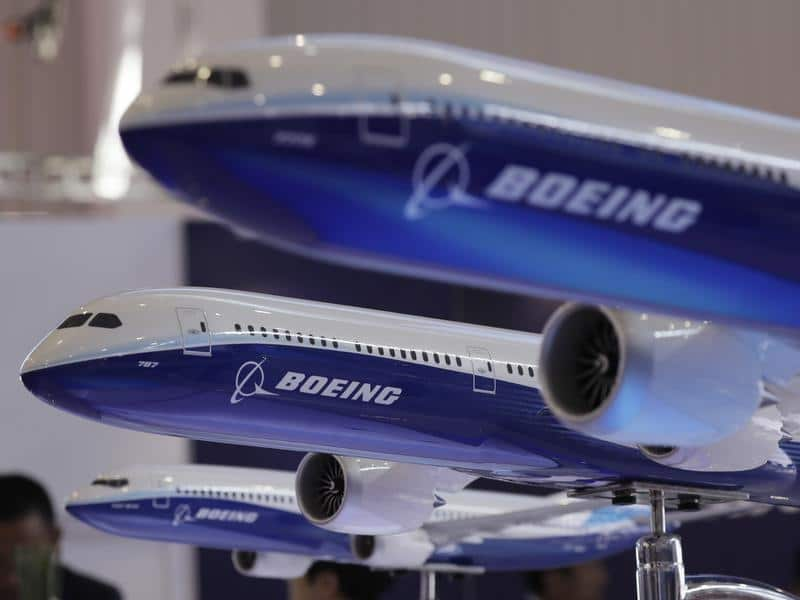The head of Boeing has said the US airplane manufacturer had made a mistake in implementing a faulty cockpit warning system on the 737 MAX and it would take time to rebuild the confidence of customers in the wake of two fatal crashes.
Chairman and chief executive Dennis Muilenburg said Boeing failed to communicate "crisply" with regulators and customers, but defended the broad engineering and design approach to nose-down control software at the centre of probes into the accidents that led to the plane's worldwide grounding. Mr Muilenburg acknowledged the company made a mistake in failing to disclose a defective cockpit warning light on its 737 MAX to regulators and customers, and said that failure has been part of reviews by global regulators.
Mr Muilenburg acknowledged the company made a mistake in failing to disclose a defective cockpit warning light on its 737 MAX to regulators and customers, and said that failure has been part of reviews by global regulators.

The Boeing 737 MAX was grounded in March following a fatal Ethiopian Airlines crash. (AAP) Source: AAP
Mr Muilenburg, who has been under fire over the MAX design and Boeing's handling of the crisis, said "we are seeing over time more and more convergence among the regulators" on when the MAX should return to service. He said he expected the MAX to return to service this year and that 90 per cent of customers had participated in simulator sessions with its upgraded MCAS software as the company works towards a certification flight with regulators soon.
He said he expected the MAX to return to service this year and that 90 per cent of customers had participated in simulator sessions with its upgraded MCAS software as the company works towards a certification flight with regulators soon.

Boeing's best-selling jet was grounded in March. (AAP) Source: AAP
Boeing says it followed long-standing engineering procedures when designing the 737 MAX.
Asked how the procedures failed to capture apparent flaws in MCAS control software and sensor architecture, Mr Muilenburg said: "Clearly, we can make improvements, and we understand that and we will make those improvements."
He added: "When I make comments about the previous MCAS design and how we followed those processes, that's something we put a lot of thought and depth of analysis into. That doesn't mean that it can't be improved."
Mr Muilenburg's comments on the eve of the Paris Airshow highlight efforts by Boeing to strike a different tone than it did in the days after the Lion Air crash in October, when it raised questions over pilot and maintenance issues.
Mr Muilenburg said the US planemaker expected to announce some orders at the show for wider-body jets, but that its main focus at this year's industry gathering was safety.
He forecast a $US8.7 trillion marketplace for Boeing's products and services over 10 years, up from the $US8.1 trillion it projected last year, and predicted the world would need 44,000 commercial jets over the next 20 years, up from the 43,000 Boeing forecast in last year's estimate.
He stuck to a previous timeline for the all-new 777X twin-aisle jet, which Boeing aims to fly later this year and deliver to airlines in 2020.
He said a possible new jet dubbed NMA had fallen behind the MAX's return to service as a priority, but that the timeline on decisions and entry to service remained unchanged.
Asked whether he had been interviewed or submitted evidence in an ongoing criminal investigation launched by the US Department of Justice in the wake of the 737 crashes, Mr Muilenburg said, "We are fully supporting any government inquiries and providing information."


